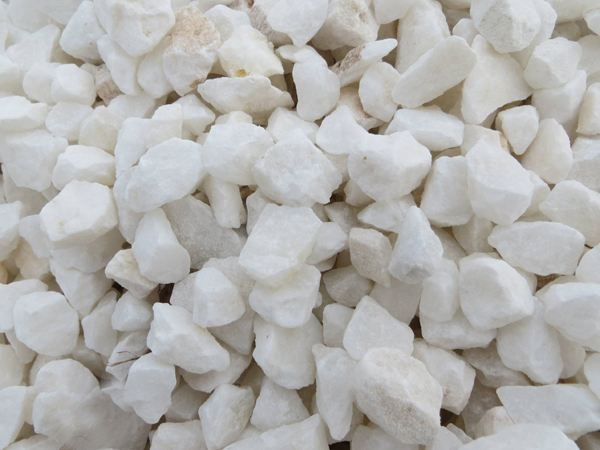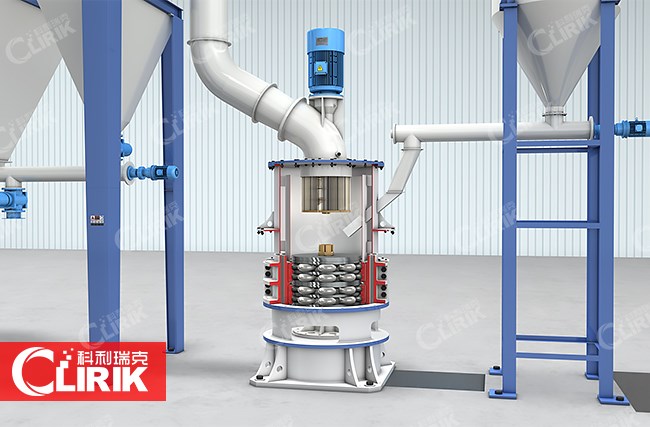Dolomite is a mineral composed of
calcium magnesium carbonate (CaMg(CO3)2). Dolomite is usually white or grayish-white in color and has a vitreous to pearly luster. It is found in sedimentary rocks such as limestone, and it is often associated with other minerals such as calcite, aragonite, and gypsum.

Dolomite
Dolomite is commonly used in the construction industry as a building material and as an aggregate for concrete and asphalt. It is also used as a source of magnesium and as a soil conditioner in agriculture. In addition, dolomite is used in the production of glass, ceramics, and steel. It has a variety of other uses, including as a filler in paints and plastics, as a flux in metallurgy, and as a catalyst in chemical reactions.
Dolomite has some unique properties that make it useful in certain applications. For example, it is a good source of magnesium, which is an important nutrient for plants and animals. Dolomite is also relatively soft, with a Mohs hardness of 3.5 to 4, which makes it easy to carve and shape. This has led to its use in sculpture and architecture.
Dolomite powder is a fine-grained mineral powder made from pulverized dolomite rock. It is commonly used in a variety of industrial applications, such as the manufacture of ceramics, glass, and steel, as well as in the agricultural and construction industries.
One of the most common uses of dolomite powder is as a filler in various products, such as paints, plastics, and rubber. The fine-grained nature of the powder makes it useful as a thickening agent, while its hardness and resistance to heat and acid make it useful in a variety of other applications.
Dolomite powder is also used in agriculture as a soil conditioner, due to its ability to raise the pH of acidic soils and provide essential nutrients like calcium and magnesium to plants. In addition, it is used as a feed supplement for livestock, as it can help to prevent conditions like milk fever and tetany.
The Use of Different Fineness Dolomite Powder
The fineness of dolomite powder can affect its properties and applications. In general, the finer the powder, the more versatile it is in terms of its uses. Here are some examples of how dolomite powder with different levels of fineness is used:
1. Coarse Dolomite Powder: This type of powder is typically used in the construction industry, particularly for the manufacture of concrete and asphalt. Its large particle size makes it ideal for providing strength and stability to structures.
2. Medium Dolomite Powder: Dolomite powder with a medium fineness is commonly used in the glass industry as a flux, which helps to reduce the melting point of the glass and improve its clarity. It is also used as a filler in paint and plastics.
3. Fine Dolomite Powder: Fine dolomite powder is widely used in the manufacturing of ceramics, as it can improve the strength and durability of ceramic products. It is also used in the production of refractory bricks, which are used in high-temperature applications like furnaces and kilns.
4. Ultrafine Dolomite Powder: This type of powder is extremely fine and is used in a variety of industrial applications, including the manufacture of paints, plastics, and rubber. It can also be used as a filler in paper and as a component in metalworking fluids.
It's important to note that the specific application of dolomite powder can vary depending on the quality of the mineral, the fineness of the powder, and other factors. Therefore, it's always best to consult with a qualified expert to determine the appropriate type of dolomite powder for a particular application.
How to process dolomite powder?
The process for producing dolomite powder typically involves several steps:
1. Mining: Dolomite is usually mined from natural deposits using various methods, including drilling, blasting, and excavating.
2. Crushing: The mined dolomite is crushed into small particles using a crusher. This step is important to ensure that the final powder has a consistent particle size.
3. Grinding: The crushed dolomite is then ground into a fine powder using a ball mill or other types of grinding equipment. This step is important to ensure that the final powder is of the desired fineness.
4. Classification: The ground dolomite powder is then classified by particle size using a classifier. This step helps to ensure that the final powder has a consistent particle size and is suitable for its intended use.
5. Packaging: The final dolomite powder is typically packaged in bags or other containers for transport and storage.
Dolomite Grinding Mill
A
dolomite grinding mill is a machine designed to grind and pulverize dolomite into fine powder. It is typically used in the production of building materials, ceramics, glass, and other industrial products.
There are several types of dolomite grinding mills available on the market, including
ball mills,
Raymond mills,
vertical mills, and
ultrafine mills. Each type of mill has its own advantages and disadvantages, depending on the specific application.
Ball mills are commonly used for coarse grinding, and they can produce a relatively coarse particle size distribution.
Raymond mills, on the other hand, are better suited for fine grinding and can produce a finer particle size distribution.
Vertical mills are ideal for grinding large quantities of material and are typically used in the cement industry.
Ultrafine mills are used for very fine grinding and can produce particles as small as 10 microns.

The process for using a dolomite grinding mill typically involves the following steps:
1. Preparation: The dolomite rock is first crushed and then dried to remove any moisture.
2. Grinding: The dried dolomite is then fed into the grinding mill, where it is ground into a fine powder.
3. Classification: The ground dolomite powder is then classified by particle size using a classifier.
4. Collection: The final dolomite powder is collected in a container or bag for further use.
The specific process for using a dolomite grinding mill can vary depending on the type of mill and the intended use of the final product. Additionally, it's important to follow safety precautions when handling dolomite powder, as it can be harmful if inhaled. Protective equipment, such as dust masks, should be worn when working with dolomite powder to prevent respiratory problems.
Distribution of dolomite mines
Dolomite is a common mineral that is found in many parts of the world. Some of the largest and most productive dolomite mines are located in the United States, Europe, and Asia.
In the United States, dolomite is mined in several states, including Alabama, Arkansas, California, Michigan, Missouri, and Texas. The largest dolomite mining operation in the United States is in the state of Michigan, where the magnesium-rich dolomite is mined from large deposits beneath the ground.
In Europe, dolomite mines are located in several countries, including Austria, Italy, Spain, and Sweden. Some of the largest deposits of dolomite in Europe are found in the Dolomite Mountains in northern Italy, which is where the mineral gets its name.
In Asia, dolomite is mined in several countries, including China, India, Japan, and Korea. India is one of the largest producers of dolomite in the world, with the mineral being mined in several states, including Andhra Pradesh, Chhattisgarh, Jharkhand, Madhya Pradesh, and Rajasthan.
Other countries with significant dolomite deposits include Australia, Brazil, Canada, Mexico, and South Africa.
It's important to note that the specific distribution of dolomite mines can vary depending on factors such as the quality and quantity of the mineral, the geological characteristics of the region, and the economic factors that influence mining activity.
Current Situation and Prospect of Dolomite Market
The global dolomite market has experienced steady growth in recent years and is expected to continue to grow in the coming years. Dolomite is used in a variety of industries, including construction, agriculture, and manufacturing, which has helped to drive demand for the mineral.
1. The construction industry is the largest consumer of dolomite, where it is used as a building material and as an ingredient in cement and concrete. As the construction industry continues to grow, especially in emerging economies, the demand for dolomite is expected to increase.
2. In the agriculture industry, dolomite is used as a soil conditioner to adjust the pH levels and improve soil fertility. This application is expected to drive demand for dolomite in the agricultural sector, especially in countries with large agricultural sectors.
3. In the manufacturing industry, dolomite is used as a flux in the production of steel and other metals. The increasing demand for steel and other metals in various industries, including automotive, aerospace, and construction, is expected to drive demand for dolomite in the manufacturing sector.
4. In terms of regional demand, the Asia-Pacific region is the largest consumer of dolomite, accounting for the majority of global consumption. This is due to the large construction and manufacturing industries in the region, as well as the growing agricultural sector.
Overall, the outlook for the dolomite market is positive, with increasing demand from various industries and regions. However, there are some challenges that could affect the market, such as the availability of high-quality dolomite deposits, environmental concerns related to mining and processing, and fluctuations in global economic conditions.

 sales@clirik.com
sales@clirik.com +86-21-20236178 86-13917147829
+86-21-20236178 86-13917147829
 sales@clirik.com
sales@clirik.com +86-21-20236178 86-13917147829
+86-21-20236178 86-13917147829

